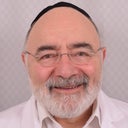Does the procedure last a life time or would the fat dissipate if I were to exercise regularly? Apparently the procedure can be life threatening if the surgeon accidentally injects the fat into a vein, is this true? Is it possible to increase size from A cup to C cup? I had silicone implants removed and I don't want them back. However, I do want a fuller breast. Why can't alcohol be consumed after breast fat transfer?
Answers (6)
From board-certified doctors and trusted medical professionals

Dr. Benjamin Baker, BMBS MBA FRCS(Plast)
Specialist Registered Plastic Surgeon
Answer
Dr. Rozina S. Ali, MD, FRCS (Plast), MBBS
Specialist Registered Plastic Surgeon
Answer
Dr. Fulvio Urso-Baiarda, MD, FRCS(Plast)
Specialist Registered Plastic Surgeon
Answer
More Breast Fat Transfer Questions
See all Breast Fat Transfer Q&AWE SEND PRETTY
EMAILS
What’s trending? Who’s turning heads? Which TikTok myths need busting? We’ve got you. No fluff, no gatekeeping—just real talk. Get our free, unfiltered newsletter.


